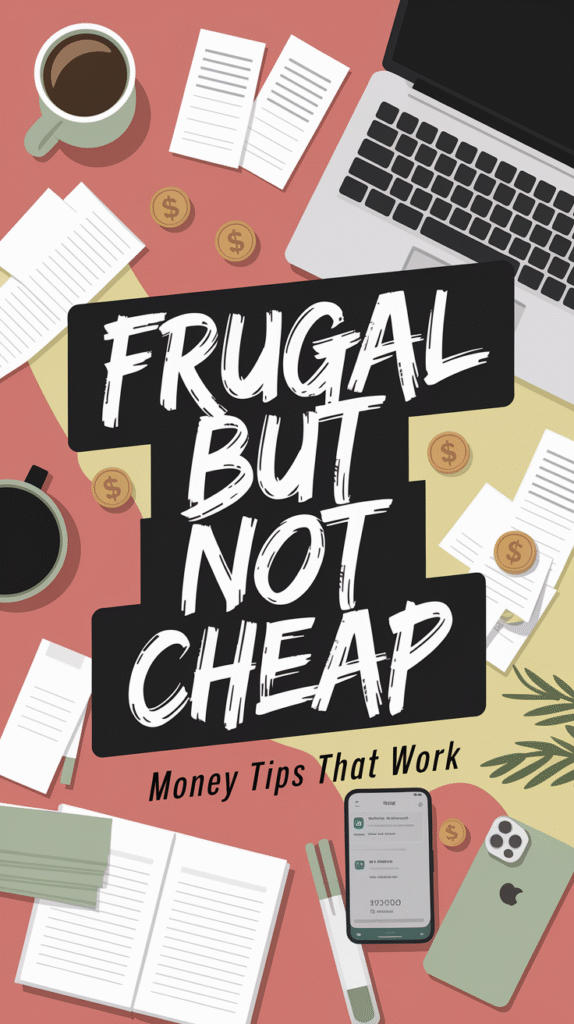Frugality has been given a bit of a bad rap over the years. It is not the same thing as being cheap or taking shortcuts or settling for less than. But real frugality is not about deprivation — it’s about spending your money purposefully. It’s figuring out what a dollar can do and making the determination if it’s better used for your goals than for your whim.
If you want to get the most out of your money without feeling like you can’t breathe, here are creative and practical ways to save that feel like a high five — not a punch in the gut.
Adopt a 30-Day Wait Rule for New Buys
It’s been 40 days of no shopping so far, what have you learned about life without new purchases? Before purchasing anything that falls outside of your normal spending, write it on a list and return to it after 30 days. This cooling-off period will help you to differentiate between want and need, and chances are you’ll lose interest in half of it. That’s money you haven’t worked for.
Batch Your Errands
Gas is expensive. So is time. Bundle all your errands into one or two days a week and map out a logical destination. You will save on fuel use, cut down on wear and tear to your car and avoid the last-minute trips that cause emergency spending.
Institute a “Use It Up” Pantry Challenge Ring-fence a week in which you will not buy any groceries. Instead, make meals out of what you already have. You’ll be surprised how creative you can be — and how much food is hiding in the back of your freezer or your pantry.
Try Community-Based Exchanges
Sign up with a local Buy-Nothing group or community swap. Whether it’s children’s clothing, books, furniture or even cookies — these transactions are free, friendly and about as gentle on the budget as you can get. You do not have to spend a dime, and you get what you need.
Keep a Running List of Needs
Don’t impulse buy, but keep a running list of items you DO need. You can shop in an intentional way when a sale finally comes around. This is particularly good for clothing, housewares and seasonal items.
Negotiate (Yes, Even Now)
Call your internet, phone or insurance provider to see whether there are existing deals, promotions or strategies to lower the amount of your bill. A lot of companies have retention offers — they just need you to ask.
Side Hustle On Low Startup Costs
You don’t have to start a business next week. Start small: freelance a skill you already have, sell handmade items, or provide a service, like pet-sitting or tutoring. The extra money can provide some breathing room, without requiring you to overhaul your life.
DIY the Everyday Items
Attempt creating a few of your own household products, such as an all-purpose cleaner (vinegar + water + essential oil), body scrubs, or tackle simple repairs. There are tutorials galore on YouTube and Pinterest. You’ll be amazed at what you can do with what’s already in your kitchen cabinets.
Cut the “Quiet Drains”
These are the sneaky subscriptions, app fees or memberships you’ve forgot about. Check your bank and credit card statements for activity often, and feel free to cancel what you’re not using. It’s like a pay raise for yourself.
Make Leftovers a Priority
Instead of cramming it into the fridge to slowly go bad, devote a night of the week to leftovers. Get creative — taco meat becomes nachos, roasted vegetables turn into a wrap, grilled chicken is reimagined as soup. It cuts down on waste and controls your food budget.
Sign Up for Loyalty Programs — Wisely
Do not do every store’s program. But the ones you frequent most often? Absolutely. Combine those rewards with coupons or cashback apps like Rakuten, Fetch or Ibotta, and you’re certain to notice a real payoff.
Trade With Friends and Neighbors
Require assistance with furniture assembly? Offer to babysit in exchange. Got extra garden produce? Trade it for baked goods. Exchanging services creates relationships and preserves cash.
Establish savings goals — and then automate them
Setting specific savings goals, not vague ones can help you visualize and achieve your dreams faster. Even if it’s $5 or $50, set up an automatic transfer into a different savings account each week. When you “pay yourself first,” you accumulate savings without needing to muster up discipline.
Reuse, Refill, Repurpose
Before you throw anything away, ask: can this be recycled? The jar of pasta is now a vase of flowers. A ripped towel is repurposed into cleaning rags. A candle holder becomes a pen cup. Make sure you can stretch as far as you can.
Take Advantage of Your Library for More than Books
Libraries now have free movies, magazines, audiobooks, language courses and (depending on your library) even museum passes. Many also offer free classes or events. It’s a resource too many skip.
Create a Frugal Fun List
Frugality is not the same thing as boring. List the fun, low-cost or free things you can do: game night, movie in the park, hike and picnic, do-it-yourself spa day. Keeping a list like this to refer back to saves you from feeling “stuck” when you’re trying to steer clear of expensive excursions.
Be Conscious of Your Energy Spend
Unplug chargers, plug up windows and swap out LED bulbs. Such small changes could appear inconsequential, but in the long run, they can impact your utility bills and the life of your appliances.
Celebrate Your Wins
Frugal living is a long game. Keep a log of your wins: paid off a bill, avoided takeout, repaired instead of replaced. It helps that these are the types of little wins that can help you build confidence and momentum — and keep you motivated for the big goals.
One can live a frugal life without having to deny oneself. In fact, it’s the opposite. It’s about creating a life filled with purpose, intention, and freedom —free from debt, stress, and clutter. You don’t have to make huge sacrifices; you just have to make a few smart choices.
A few small changes in behavior, thinking and planning can have a big impact on your finances. Begin with one or two ideas that appeal to you and expand as you would like. Your future self (and your bank balance) will be grateful.


